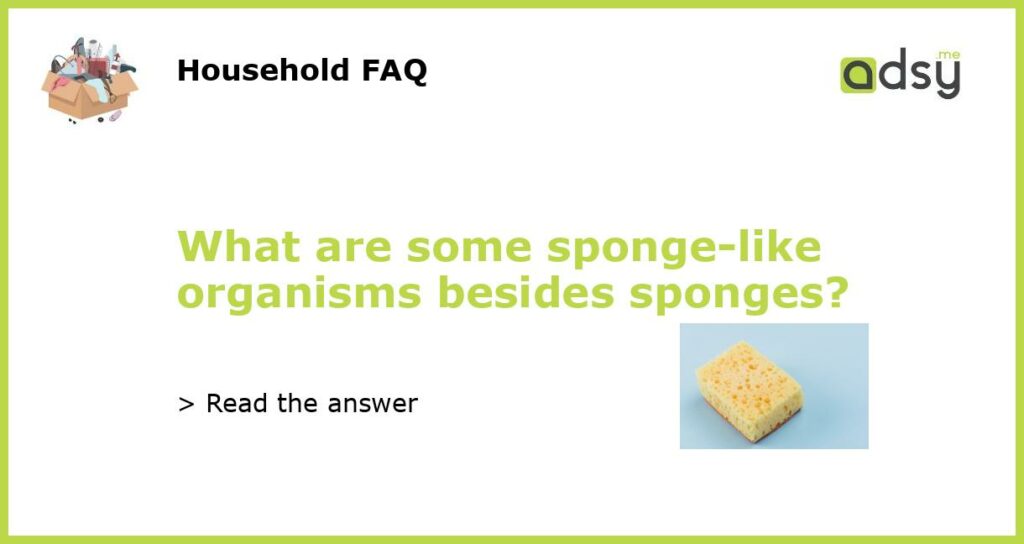Introduction
When we think of sponge-like organisms, most of us immediately picture the familiar sea sponges that line the ocean floor. However, there are actually several other fascinating organisms that share some similarities with sponges. In this article, we will explore some of these sponge-like organisms and discover the unique features that set them apart.
Choanoflagellates: The Protozoan Sponges
Choanoflagellates are single-celled organisms that can be found in both freshwater and marine environments. While they may be microscopic, these tiny organisms play a significant role in the marine ecosystem. Choanoflagellates possess a collar of microvilli that resembles the choanocyte cells found in sponges. These collar cells allow the organisms to effectively capture and consume bacteria, making them crucial in nutrient cycling.
Research suggests that choanoflagellates are the closest living relatives of animals, including sponges. Due to their resemblance to sponge cells, scientists hypothesize that they may be an evolutionary link to the earliest animal life forms.
Cnidarians: The Gelatinous Relatives
Cnidarians, such as jellyfish and corals, may not resemble sponges at first glance, but they do share some sponge-like characteristics. These organisms possess specialized cells called cnidocytes that contain stinging nematocysts. While their main purpose is defense and prey capture, cnidarians also use these structures to absorb nutrients from their environment, similar to sponges.
Additionally, some cnidarians, like sea anemones, have a sac-like body plan that resembles the structure of sponges. These organisms have a central cavity surrounded by tentacles, which they use both for feeding and defense. While cnidarians and sponges are distinct groups, they exhibit certain shared traits, suggesting an evolutionary connection.
Xenophyophores: The Deep-Sea Giants
Xenophyophores may not be as well-known as sponges, but they deserve recognition as some of the largest single-celled organisms on Earth. These deep-sea dwellers can reach sizes of over 20 centimeters in diameter and have intricate skeletons made of sediment particles.
What sets xenophyophores apart is their ability to create complex structures similar to those of sponges, despite being unicellular. These structures, called agglutinated tests, provide the organism with structural support and protection. Like sponges, xenophyophores also play a role in nutrient cycling by ingesting organic matter from the seafloor.
Tunicates: The Filter-Feeding Cousins
Tunicates, also known as sea squirts, are marine invertebrates that exhibit some sponge-like characteristics. While tunicates are more closely related to vertebrates than to sponges, they share a common filter-feeding strategy. These organisms use specialized structures called siphons to draw water into their bodies, where they filter out small particles of food.
Although tunicates lack the specialized cell types found in sponges, like the choanocytes, they fulfill a similar ecological role by filtering organic matter from the water. Interestingly, some species of tunicates secrete a tough, spongelike substance called tunicin, which is similar to the collagen fibers found in sponges.
While sea sponges may be the most well-known sponge-like organisms, there are several other intriguing organisms that share some similarities with these aquatic filter feeders. From the choanoflagellates, which may hold clues to the earliest animal life forms, to the deep-sea giants known as xenophyophores, these organisms expand our understanding of the diversity and adaptability of life on Earth.






